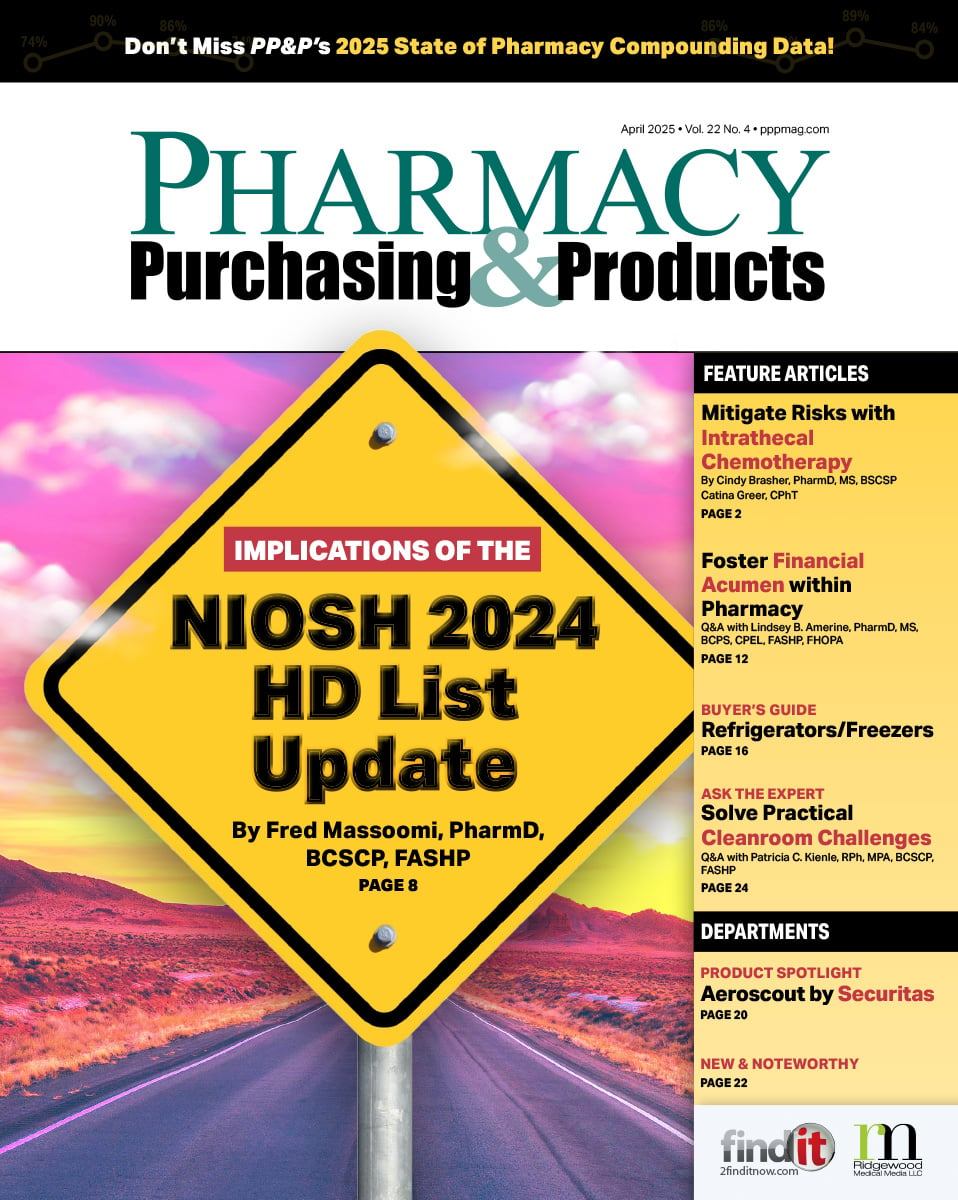- Show Menu
- Contact Us
- FAQs
- Reader Service
- Survey Data
- Survey Winners
- Testimonials
- Upcoming Events
- Webinars
- White Papers
Recent Developments in Drug Shortages
Q&A with Erin R. Fox, PharmD, BCPS, FASHP
Senior Director, Drug Information and Support Services,University of Utah Health
Pharmacy Purchasing & Products: What is the current state of drug shortages in the United States?
Erin R. Fox, PharmD, BCPS, FASHP: The number of new drug shortages has decreased; however, long-term active and ongoing shortages are not resolving (see FIGURES 1 and 2). It is important to note that the number of new and ongoing shortages is not the only significant metric—a single shortage can require hundreds of hours of work and can impact a large number of patients. For example, the recent national sodium bicarbonate shortage has required many hospitals to cancel elective surgeries. Shortages of basic products, such as saline, sodium bicarbonate, potassium phosphate, emergency syringes, antibiotics, electrolytes, and cardiovascular agents, still impact a large number of clinicians and patients (see FIGURES 3 and 4).1
Recent trends include severe shortages of the most essential products hospitals use on a daily basis, especially generic, relatively low-cost, injectable products that typically have only one or two suppliers. Hospitals are experiencing shortages of medications that have been the mainstay of treatment for decades, such as saline, diazepam, and morphine.
A year ago, I would have said that the overall trend of drug shortages was improving. However, quality deficiencies at manufacturing facilities are now having a significant impact on drug availability. Unfortunately, the drug supply chain in the United States is quite fragile. Poor manufacturing quality is a significant challenge, one that some drug manufacturers are finding difficult to overcome. Drug shortages will not fundamentally resolve until manufacturing quality improves.

PP&P: What existing drug shortages are of particular concern?
Fox: Shortages of commonly used medication strengths may require pharmacy to mix products and concentrations from multiple delivery devices, which is a significant safety concern. For example, some morphine and hydromorphone prefilled syringes are on shortage; although it is unlikely that hospitals will completely run out of these products, a sufficient supply of the most commonly used strengths is not available. Therefore, hospitals must mix whatever products they are able to obtain in order to procure a sufficient quantity. Hospitals should try to use the same concentration whenever possible, and provide conversion doses to providers on order entry if a substitute is required.
Due to the saline shortage, hospitals cannot access their usual volumes of bags. It is quite challenging to substitute 100 mL bags with 250 mL bags, or vice versa. The concentration changes required are not only problematic from a clinical perspective, but also require major logistic changes to the electronic medical record and smart pumps. Shortages have become so severe that most systems have converted infusion premedications to IV push and are using oral therapy whenever possible.
PP&P: What effect have regulatory efforts had on mitigating drug shortages?
Fox: While regulatory efforts are certainly helpful, they are only one of the elements required to improve management of shortages. Keep in mind that drug manufacturers are not required to supply any drug, including life-saving medications. In 2012, the Food and Drug Administration (FDA) Safety and Innovation Act was passed, which includes a provision that requires drug suppliers to notify the FDA about shortages.2 While this provision helps organizations plan for impending shortages, the FDA cannot force any manufacturer to improve its quality measures. Thus, shortages due to poor quality continue, as do near daily recalls of poorly manufactured products. For example, contaminated oral liquid docusate sodium from one manufacturer has been responsible for two separate outbreaks of Burkholderia cepacia, one in 2016 and again in 2017.3
PP&P: What changes would significantly impact the number and severity of drug shortages?
Fox: The most critical change would be for manufacturers to improve the quality of their drug production (see FIGURE 5). As generic drug manufacturers increase prices, some of these profits should be invested back into improving manufacturing quality.

A small change that would make a meaningful impact is increasing transparency around labeling. Organizations purchasing pharmaceuticals are currently unable to base buying decisions on supplier quality, because drug companies are not required to disclose which company actually manufactured the product they are selling. Transparency would provide additional information to clinicians—for example, where recalled products were manufactured—allowing them to avoid purchasing products from companies with poor quality track records.
In addition, there are several bills currently in Congress that may help expand the overall number of suppliers, and thus increase competition. Additional suppliers may improve the resiliency of the supply chain, thereby reducing shortages.
References
- United States General Accounting Office. Drug Shortages: Certain Factors Are Strongly Associated with this Persistent Public Health Challenge. www.gao.gov/products/GAO-16-595. Accessed November 13, 2017.
- Food and Drug Administration Safety and Innovation Act (S. 3187). 112th Congress, 2nd Session. Congressional Record Daily Edition, Vol. 158, No. 76. www.congress.gov/congressional-record/2012/05/24/daily-digest. Accessed November 13, 2017.
- Centers for Disease Control and Prevention. Healthcare-Associated Infections. Outbreak and Patient Notifications. www.cdc.gov/hai/outbreaks/b-cepacia/index.html. Accessed November 13, 2017.

Erin R. Fox, PharmD, BCPS, FASHP, is senior director, drug information and support services, at the University of Utah Health, and adjunct associate professor, University of Utah College of Pharmacy Department of Pharmacotherapy. She received her PharmD at the University of Utah and completed a specialized residency in drug information at the University of Utah Hospitals and Clinics.
Like what you've read? Please log in or create a free account to enjoy more of what www.pppmag.com has to offer.








